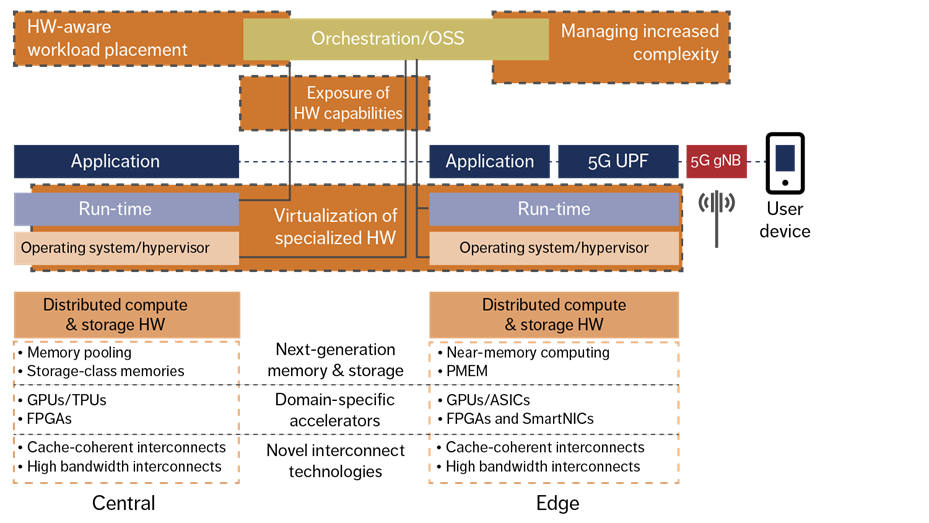With a vastly distributed system (the telco network) already in place, the telecom industry has a significant advantage in the transition toward distributed cloud computing. To deliver best-in-class application performance, however, operators must also have the ability to fully leverage heterogeneous compute and storage capabilities.
Ericsson CTO Erik Ekudden’s view on the future of cloud computing
The growing interest in cloud computing scenarios that incorporate both distributed computing capabilities and heterogeneous hardware presents a significant opportunity for network operators. With a vast distributed system (the telco network) already in place, the telecom industry has a significant advantage in the transition toward distributed cloud computing.
This Ericsson Technology Review article explores the future of cloud computing from the perspective of network operators, examining how they can best manage the complexity of future cloud deployments and overcome the technical challenges. Redefining cloud to expose and optimize the use of heterogeneous resources is not straightforward, but we are confident that our use cases and proof points validate our approach and will gain traction both in the telecommunications community and beyond.

The cloud is transforming, both in terms of the extent of distribution and in the diversity of compute and storage capabilities. On-premises and edge data centers (DCs) are emerging, and hardware (HW) accelerators are becoming integral components of formerly software-only services.
One of One of the main drivers into the age of virtualization and cloud was the promise of reducing costs by running all types of workloads on homogeneous, generic, commercial off-the-shelf (COTS) HW hosted in dedicated, centralized DCs. Over the years, however, as use cases have matured and new ones have continued to emerge, requirements on latency, energy efficiency, privacy and resiliency have become more stringent, while demand for massive data storage has increased.
To meet performance, cost and/or legal requirements, cloud resources are moving toward the edge of the network to bridge the gap between resource-constrained devices and distant but powerful cloud DCs. Meanwhile, traditional COTS HW is being augmented by specialized programmable HW resources to satisfy the strict performance requirements of certain applications and limited energy budgets of remote sites.
The result is that cloud computing resources are becoming increasingly heterogeneous, while simultaneously being widely distributed across smaller DCs at multiple locations. Cloud deployments must be rethought to address the complexity and technical challenges that result from this profound transformation.
In the context of telecommunication networks, the key challenges are in the following areas:
- Virtualization of specialized HW resources
- Exposure of heterogeneous HW capabilities
- HW-aware workload placement
- Managing increased complexity.
Getting all these pieces right will enable the future network platform to deliver optimal application performance by leveraging emerging HW innovation that is intelligently distributed throughout the network, while continuing to harvest the operational and business benefits of cloud computing models.
Figure 1 positions the four key challenges in relation to the orchestration/operations support systems (OSS) layer, the application layer, run-time and the operating system/hypervisor. The lower part of the figure provides some examples of specialized HW in a telco environment, which includes domain-specific accelerators, next-generation memory and storage, and novel interconnect technologies.
More: Magazine #ericssontechnologyreview
Authors: Wolfgang John, Chandramouli Sargor, Robert Szabo, Ahsan Javed Awan, Chakri Padala, Edvard Drake, Martin Julien, Miljenko Opsenica